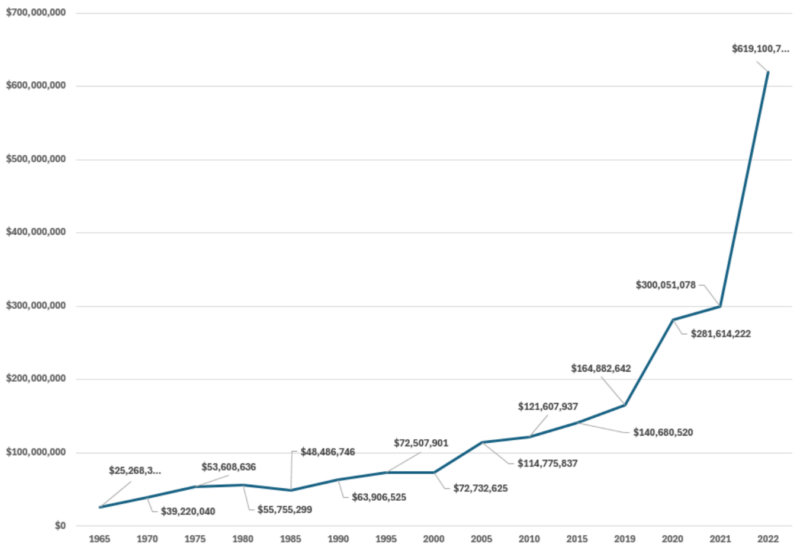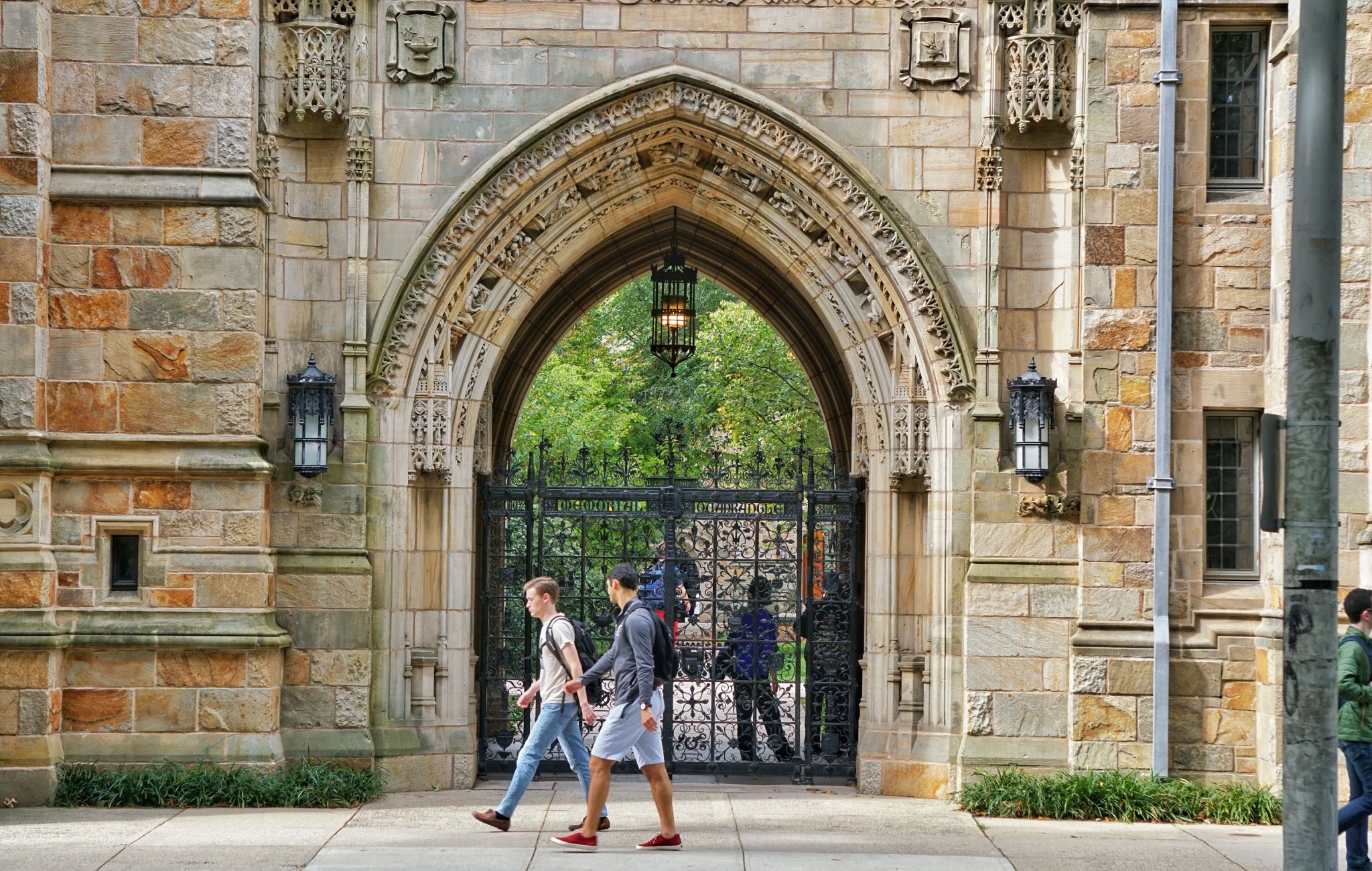
Two things seem like they should go without saying: People use their own money more efficiently than they use someone else’s, and the more you subsidize a thing the more of it you tend to get. Both profoundly apply to American higher education, a teetering tower of ivory made simultaneously skyscraping and bloated by federal taxpayer dollars.
We would all be better off if the feds withdrew from higher education, requiring ivory tower denizens to sustain themselves not with money originally belonging to involuntary third-party participants – taxpayers – but students, lenders, and research patrons using their own money to buy what the tower is hawking. That would make higher education more efficient, effective, and better for society.
“Better,” importantly, does not mean that colleges and universities will get wealthier or more opulent. That is what most institutions would likely prefer, but those characteristics have little to do with the ivory tower getting much more focused on what they are supposed to do: efficiently impart knowledge and skills students need and want, and produce new knowledge through research. Trappings such as on-campus waterparks, gleaming new buildings, and gourmet food might feel like the institutions are getting more attractive — like a cruise ship continually adding more shows, bars, and waterslides — but when it comes to colleges’ core purposes, they are superfluous.
How much have the feds put into higher education over the years?
Since 1965 — the earliest year with readily available data — inflation-adjusted federal expenditures such as Pell Grants, aid to institutions, and research funding has risen from about $25 billion to $620 billion, a nearly 25-fold increase. A lot of the increase in the most recent years includes “relief” funding for the impacts of COVID-19, but going back to 2019 — the last year before the pandemic — the total was approximately $165 billion, or a nearly seven-fold increase.

Author’s chart.
While direct expenditures have been the biggest source of federal funding, it is money that is supposed to be repaid — especially student loans — that has dominated discussion of late. Going back to 1970, this “off-budget support” has risen from around $6 billion to $84 billion, or a 14-fold increase. That is down from a peak of almost $138 billion in 2011.

Author’s graphic.
Altogether, federal support increased in real terms from about $45 billion in 1970 to $267 billion in 2019, the most recent year predating COVID-19.
What has all that largesse wrought?
Certainly a lot more degrees. In 1960, 7.7 percent of Americans ages 25 and over had a bachelor’s degree or higher. By 2023 that was up to 38.3 percent. And it was not only at the bachelor’s level that we saw growth. In 1995 — the earliest year with readily available federal data — 4.5 percent of Americans 25-and-older had a master’s degree or higher. By 2023 that had more than doubled, hitting 10.6 percent.
This ballooning of credentials is, of course, only beneficial if all of those degrees indicate that the possessors attained valuable knowledge that could most efficiently be accessed in college, as opposed to on-the-job training, outside reading, or other, less expensive education avenues. But that is often in doubt.
Consider whether undertaking college studies will eventually pay for themselves — that they supply at least a break-even return on investment indicating sufficient labor market value. A recent analysis suggests that, after accounting for costs such as tuition, foregone earnings while enrolled, and chances of not completing a program, 31 percent of all students are in programs likely to produce a negative return on investment. By degree type, that share is as low as 23 percent for bachelor’s students and doctoral and professional degree students, and as high as 43 percent for master’s and associate degrees.
That is a lot of education not paying off, and it is a vicious cycle. A big reason so many have sought risky degrees is that the federal government incentivizing people to go to college has increasingly flooded the market with pieces of paper that represent less and less learning, and that do less to distinguish one potential employee from another. That has caused employers to require more and higher degrees for jobs that did not previously require them. Which puts more pressure on people to pursue degrees…
People have been forced onto a credential treadmill that requires them to run faster and faster just to stay in the same place. It is not helping anyone, other than the colleges, which get paid for all the wasted time and energy.
What about funding research? Surely that makes more sense than producing a glut of sheepskins. Research enables humanity to uncover things we do not know and, hence, makes all our lives better, right?
Research that spurs innovation is, indeed, important for progress. But there is not a lot of evidence that it needs to be federally funded or concentrated at universities. The National Science Foundation has estimated that, in 2022, there was nearly $886 billion spent on research and development in the United States. Nearly $693 billion of that, or 78 percent, was funded by business. About $160 billion, or 18 percent, was federally funded. Of that, an estimated $42 billion — or less than 5 percent of the total — was at universities.
Of course, much of overall R&D is practical, focused on things that can be brought to market in the short to medium term. Much federal funding is for so-called “basic” research: discovering things with no obvious or immediate market applications, like studying the age of the universe, or the migration patterns of orangutans. Given the lack of pecuniary incentives to do such work, many fear basic research will not be done absent federal funding.
That is not an unreasonable conclusion. Maybe without federal funding some of that research will, indeed, not be conducted. If taxpayers held onto their money they might well use it for more concrete ends, such as buying a new car, starting a business, or going on a much-needed vacation. The question is, why should the interests of scientists, and maybe just curious people, trump the needs and desires of individual taxpayers? There is no clear reason they should.
But ending federal funding for research at universities does not mean basic research must be abandoned. Private individuals and organizations are welcome to fund such endeavors, using their own money. The NSF reports that in 2022 “nonprofit organizations” provided about $21 billion for research and development. Getting the federal government out of the research business would open many more opportunities for private entities to fund research without duplication, or simply assuming the federal government will take care of it.
It should also not be assumed that increased funding always translates into increased research. At least one study has found that higher government funding of R&D largely translates into higher researcher salaries, not more and better research. And then there is the overhead: University researchers tend to charge the federal government much more in overhead than businesses and foundations are willing to pay. This is almost certainly a loss for taxpayers and more unhealthy fat for higher ed.
Given its teetering girth, the ivory tower would almost certainly be a much better neighbor if federal funding were ended. The evidence points to a need for fewer credentials, at appreciably lower prices, while the importance of federal funding for basic research may be overestimated.
There is some good news.
While federal funding has ballooned, starting around 2011 potential higher-ed customers started to cut back. In that year total off-budget federal spending, dominated by student loans, hit its peak at about $138 billion, and it has since declined to under $84 billion. It seems potential students increasingly started deciding they were not going to continue taking on major debt for sky-high prices. This has inspired many schools to move from their old pricing model — high price, high discount — to something more reasonable: lower prices. This was able to happen because, unlike our elementary and secondary education system, much of government’s funding reaches colleges through student choices, and colleges are not “free.” There can be market-like responses to dissatisfaction with schools, though they are heavily muted by subsidies.
Unfortunately, the Biden administration is working for wide cancellation of student debt, which would squelch even these limited market forces. If successful, Biden would send the message to all future students, “Don’t worry about paying exorbitant prices. You won’t have to repay much of your debt.” And what would Biden’s plans cost taxpayers? Up to $559 billion, or more than the gross domestic product of Ireland.
We would all be better off with a leaner, more efficient higher education system. To do that, we must get the feds out.




